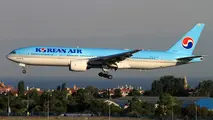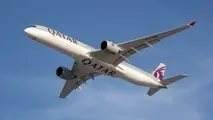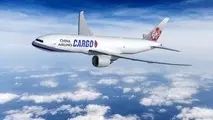Takeoff Performance Will Drive 777-10 Study, Boeing Says
DUBAI—Boeing says a technical feasibility study of a stretched 777-10 derivative of the 777X family will be driven largely by takeoff performance requirements.

DUBAI—Boeing says a technical feasibility study of a stretched 777-10 derivative of the 777X family will be driven largely by takeoff performance requirements.
In the case of such a large capacity twin-engine aircraft, these requirements focus mainly on whether it could meet current critical engine failure certification rules.
The prospect of a longer 777-10, potentially seating up to around 470 passengers or more, emerged at the Dubai Airshow as part of an announcement by Emirates order for 65 additional GE9X-powered 777-9s in a deal worth $38 billion. Although details of potential configuration changes are yet to be evaluated “we've committed to a study with Emirates to understand those things,” says Boeing's Justin Hale, Customer Leader for the 777X.
To increase maximum seating capacity toward the 50-plus additional passengers targeted by Emirates President Tim Clark, the 777-9 would notionally be accommodated with a stretch of around 16.ft, taking the -10’s overall length up to 268 ft. While the 777X’s electronic tailskid protection system would protect the aircraft from over-rotation with the existing main landing gear, “it's more about the impact on takeoff performance,” Hale says.
The 777-10 evaluation will also cover design aspects ranging from added structural weight to payload-range changes. “Those are all the things that a study would have to go look,” he adds.
Takeoff performance for any aircraft, but particularly for a twin-engine aircraft, must consider the impact of an engine failure and the effect on takeoff distance and climb rate. Designers must also factor in the impact on controllability, as the aircraft must maintain directional control after an engine failure.
Although the potential size of a prospective 777-10 and its market potential remain unknown, Boeing continues to “investigate what other things are in the art of the possible,” says Darren Hulst, vice president of Boeing's Commercial Marketing division. “We don't stop once we deliver [a product]. We're thinking about what other innovations we can bring, whether it's more range, more payload, more capacity. Those are the things that we're looking at in the near term to see where the market is.”
Hulst says the 777-10 feasibility study will include a tradeoff between risk and versatility or flexibility. The future replacement market for 350-plus seaters, including the current fleets of Airbus A380s and 777-300ERs, is just over 1,000. “The vast majority of those airplanes probably want to be replaced by the 777-9 because it's the right-sized aircraft that provides growth, but maybe not significantly more growth and risk than what the market wants,” Hulst says.
“Sometimes the tradeoff on risk is too expensive and I think as we look forward, the question is going to be, what is the tradeoff between risk or more capacity versus a platform for more capacity?” he says.



